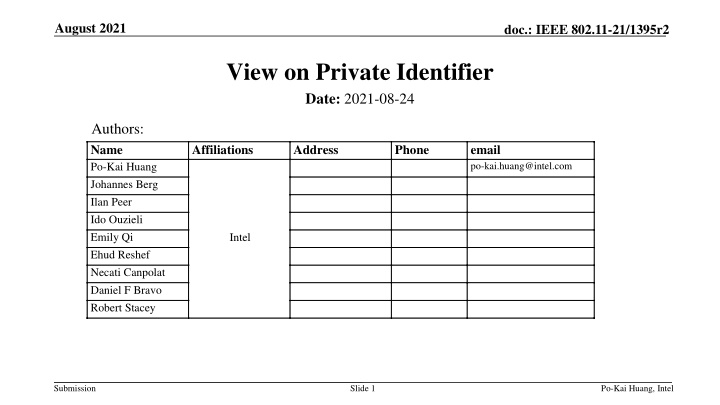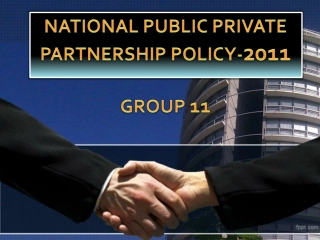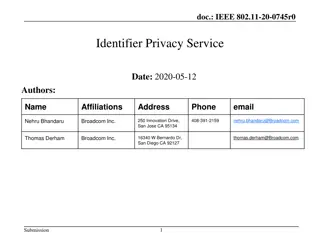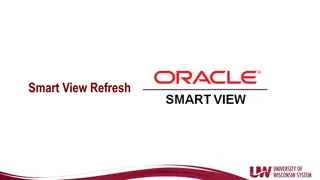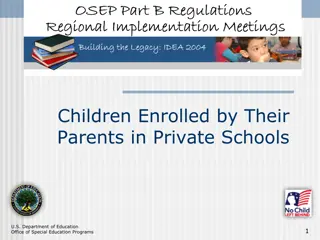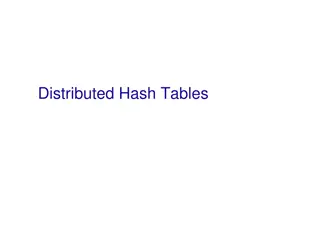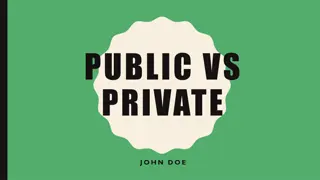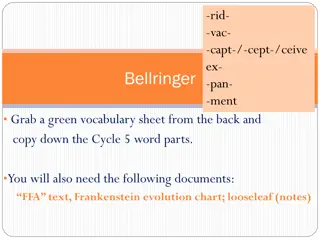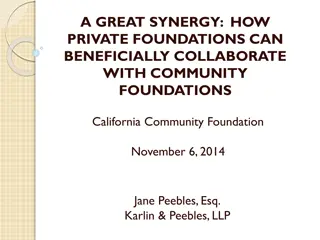View on Private Identifier
This document discusses the concept of private identifiers in IEEE 802.11 networks, addressing the balance between privacy requirements and state-bound requirements. It evaluates scenarios and proposes solutions to maintain privacy and network integrity.
Download Presentation

Please find below an Image/Link to download the presentation.
The content on the website is provided AS IS for your information and personal use only. It may not be sold, licensed, or shared on other websites without obtaining consent from the author.If you encounter any issues during the download, it is possible that the publisher has removed the file from their server.
You are allowed to download the files provided on this website for personal or commercial use, subject to the condition that they are used lawfully. All files are the property of their respective owners.
The content on the website is provided AS IS for your information and personal use only. It may not be sold, licensed, or shared on other websites without obtaining consent from the author.
E N D
Presentation Transcript
August 2021 doc.: IEEE 802.11-21/1395r2 View on Private Identifier Date: 2021-08-24 Authors: Name Po-Kai Huang Johannes Berg Ilan Peer Ido Ouzieli Emily Qi Ehud Reshef Necati Canpolat Daniel F Bravo Robert Stacey Affiliations Intel Address Phone email po-kai.huang@intel.com Submission Slide 1 Po-Kai Huang, Intel
August 2021 doc.: IEEE 802.11-21/1395r2 Abstract There has been a fair amount of presentations in 11m [1], 11bh[2, 3], and 11bi [4, 5] mentioning/hinting at additional private identifier from the client Different names are used in different presentations/discussions in different forums: ex. unique identifier/identifier [1], client ID [3], a device or user identification [2], persistent identifier/per-DS identifier [5] private concept is emphasized as without exposing any new user privacy concern , encrypted , hidden , not identifiable/trackable by unauthorized/undesired observers The discussions had arguably left audience thoroughly perplexed We discuss our view on how this topic is related to both 11bh and 11bi Submission Slide 2 Po-Kai Huang, Intel
August 2021 doc.: IEEE 802.11-21/1395r2 Go back to the basic 11aq defines randomized MAC address in 12.2.10 (Requirements for support of MAC privacy enhancements) for privacy enhancement with the following caveat: State created with an AP using a prior MAC address, for instance, RSN preauthentication state or FT state established over-the-DS, is bound to the MAC address used when that state was created. Prior to establishing an association to the AP, the non-AP STA shall change its MAC address to the MAC address used when the state was created. The non-AP STA connecting to an infrastructure BSS shall retain a single MAC address for the duration of its connection across an ESS. The above spec texts show that there are two requirements that are battling against each other Privacy requirement => randomize MAC address State bound requirement => can not randomize MAC address Slide 3 Submission Po-Kai Huang, Intel
August 2021 doc.: IEEE 802.11-21/1395r2 Evaluation of the Two Requirements Client Decision Privacy Requirement State Bound Requirement Subcase Action Today Do we need to address the scenario? No No N/A Do not randomize MAC address No, do not need to do anything No Yes N/A Do not randomize MAC address No, do not need to do anything Yes No N/A Randomize MAC address No, just use 11aq Yes Yes Advantage of maintain state bound > advantage of Privacy Do not randomize MAC address 11bi angle: Can we have a way to keep privacy requirement? Yes Yes Advantage of maintain state bound < advantage of Privacy Randomize MAC address 11bh angle: Can we have a way to keep state bound requirement? Submission Slide 4 Po-Kai Huang, Intel
August 2021 doc.: IEEE 802.11-21/1395r2 Evaluation of the Two Requirements Client Decision Privacy Requirement State Bound Requirement Subcase Action Today Do we need to address the scenario? No No N/A Do not randomize MAC address No, do not need to do anything No Yes N/A Do not randomize MAC address No, do not need to do anything Yes No N/A Randomize MAC address No, just use 11aq Yes Yes Advantage of maintain state bound > advantage of Privacy Do not randomize MAC address 11bi angle: Can we have a way to keep privacy requirement? Yes Yes Advantage of maintain state bound < advantage of Privacy Randomize MAC address 11bh angle: Can we have a way to keep state bound requirement? Submission Slide 5 Po-Kai Huang, Intel
August 2021 doc.: IEEE 802.11-21/1395r2 Evaluation of the Two Requirements Client Decision Privacy Requirement State Bound Requirement Subcase Action Today Do we need to address the scenario? No No N/A Do not randomize MAC address No, do not need to do anything No Yes N/A Do not randomize MAC address No, do not need to do anything Yes No N/A Randomize MAC address No, just use 11aq Yes Yes Advantage of maintain state bound > advantage of Privacy Do not randomize MAC address 11bi angle: Can we have a way to keep privacy requirement? => Let s have another private identifier tied to state bound requirement, and then randomize MAC address Yes Yes Advantage of maintain state bound < advantage of Privacy Randomize MAC address 11bh angle: Can we have a way to keep state bound requirement? => Let s have another private identifier tied to state bound requirement, so we do not break state bound requirement while randomize MAC address Submission Slide 6 Po-Kai Huang, Intel
August 2021 doc.: IEEE 802.11-21/1395r2 Conclusion of the Evaluation 11bh and 11bi are looking at the same problem from different angles, and there are now two forums with solutions that try to address the same problem It does not make sense to have two solutions in two different groups to solve the same problem The outcome is either solution may not be used eventually Way forward Deny the fact that there is a relation We do not agree this is the case Design the identifier only in 11bh Does not make sense because there is a privacy angle and potential change on 11aq statement. Design the identifier in both 11bh and 11bi Somehow we have to recognize both groups are talking about the same identifier and may have to live with the confusion of two solutions. Design the identifier only in 11bi Preferred. A mechanism about private identifier that satisfies both state bound requirement and privacy requirement needs to be dealt in the amendment with larger scope Submission Slide 7 Po-Kai Huang, Intel
August 2021 doc.: IEEE 802.11-21/1395r2 Straw Poll Do you support that the optional mechanism to provide additional private identifier needs to be discussed in 11bi? Submission Slide 8 Po-Kai Huang, Intel
August 2021 doc.: IEEE 802.11-21/1395r2 Reference [1] 11-19-0496-01 ID_Query_Proposal [2] 11-21-0332-13 Issues Tracking [3] 11-21-1378-00 Client ID query concept [4] 11-21-993-00 hotel_privacy_usecase [5] 11-21-1328-00 Changing STA MAC addresses per association and SA/DA hiding Submission Slide 9 Po-Kai Huang, Intel
